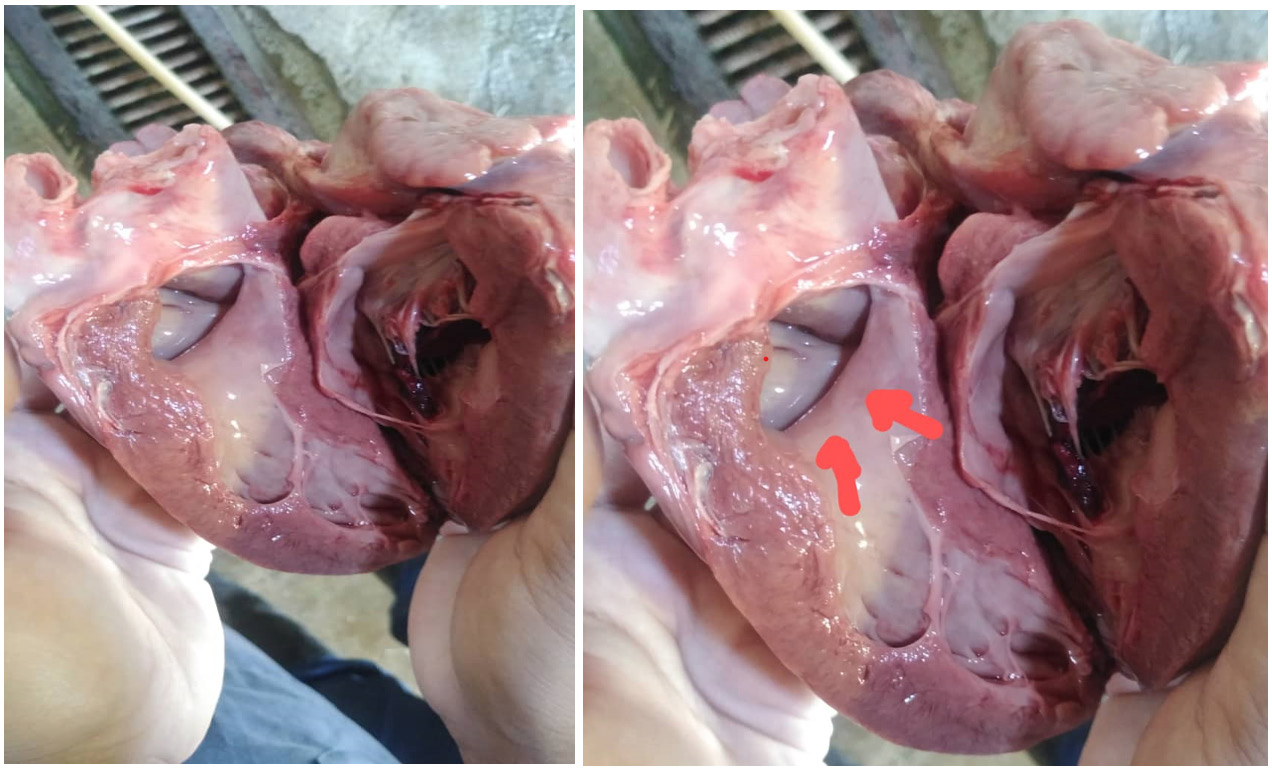Ventricular Septal Defect in Eight Holstein Calves in a Large Dairy Herd
Introduction
In this clinical case series report, we aimed to present clinical findings concerning congenital ventricular septal defect (VSD) in a commercial dairy herd in Iran (Behroozi Dairy Complex, approximately 3000 dairy cattle, Tehran, Iran) and to differentiate between VSD and respiratory diseases in Holstein calves. The VSD is an abnormality in both human and animal hearts in which the heart wall (septum) that divides the heart into two separate parts (left and right ventricles) is not fully developed during embryogenesis [1]. As a result, a hole is formed between heart ventricles leading to disturbed and abnormal blood flow into the heart that cause heart failure. Genetic background has been proposed as a main cause of VSD in humans. However, in a recent study [2], it was concluded that maternal stressful life had a significant role in the development of heart disorders especially VSD in offspring.
Case Presentation and Discussion
In previous reports concerning VSD in Holstein calves, only one calf has been identified with VSD [3,4]. However, according to our observations in a large dairy herd, we suggest that VSD occurs more frequently and that it could be confused with respiratory diseases at least in some cases. In the current case report, eight Holstein calves (5 females and 3 males) were diagnosed initially for respiratory diseases but were further examined for the probability of heart defects. Consequently, the VSD was diagnosed and observed by postmortem necropsy in all 8 calves. The Figures 1 & 2 illustrate the hole position with different sizes obtained from culled/dead calves with VSD in a large dairy farm (Behroozi Dairy Complex, approx. 3000 dairy cattle, Tehran, Iran). The calves diagnosed with VSD ranged from 1 to 90 days of age, indicating that this phenomenon occurs in different young ages. As the VSD is a congenital disorder, its severity can be affected by the hole diameters. This implies that calves with a smaller hole in the septum might live without any problem unless the hole becomes large enough to seriously compromise the heart function as calf ages. Therefore, disorder detection and calf culling, or death may occur in a variety of ages. Like the age, the VSD was not sex-dependent either and it occurred in both female and male calves. Moreover, exploring parity in the incidence of VSD revealed no differences between cows or heifers.
Figure 1: The hole position (VSD) is illustrated when observed in culled/dead calves in a large dairy farm (Behroozi Dairy Complex, Tehran, Iran).
Figure 2: The hole position with different size in another case of VSD in another calf (Behroozi Dairy Complex, Tehran, Iran).
As noted, the symptoms of VSD were primarily similar to those of the respiratory diseases. Hyperpnea, lethargy, anorexia and poor growth are common clinical symptoms of VSD. Clinically, substantial alterations occur in heartbeat frequency and sound in the VSD cases. For instance, the heart beats faster and a thrill can be detected when the right or left side of the thorax is palpated. The heart auscultation showed an audible murmur in all affected calves with different degrees of VSD. The body temperature was normal in the VSD cases, whereas in respiratory diseases, the body temperature is almost high (> 39.3 °C). As such, the early diagnosis of VSD in calves can be helpful in managing these animals and provide an opportunity to distinguish it from respiratory diseases. As a result, the useless antibiotics therapy should be avoided. Finally, the right calf culling time can be decided upon. As noted above, mothers exposed to stressful life during pregnancy had higher risks of VSD development in offspring. It has been reported that maternal lifestyle as well as excessive body mass possess potential roles in increasing congenital heart defects in babies [5]. Suboptimal calf welfare may occur when dams are exposed to stresses and diseases during pregnancy [6]. Overall, it is suggested that gestation is a critical phase for both dam and fetus and that all pressures must be minimized during this period. Overcrowding, hyperthermia, and nutritional deficiency are the most common stressors in ruminant farms worldwide.
As a result, optimizing the pregnant and dry cow environment by reducing stress might reasonably decrease congenital disorders, and hence, improve the productivity and sustainability of commercial dairy herds.
Conclusion
Eight cases of the Ventricular Septal Defect (VSD) were diagnosed and reported in the present study in a large dairy herd in Iran. The VSD is a common heart abnormality leading to culling or death of young calves. Hyperpnea, lethargy, and poor growth are its most common symptoms, but they should be differentiated from the similar symptoms in respiratory diseases. Palpation of the right side of thorax would be useful for the early diagnosis of VSD. Controlling stress in late gestation and attention to herd genetics programs could be helpful in minimizing congenital heart problems. Consequently, preventing calf culling or death will benefit the commercial dairy herds’ economy.
For more Articles on: https://biomedres01.blogspot.com/




No comments:
Post a Comment
Note: Only a member of this blog may post a comment.